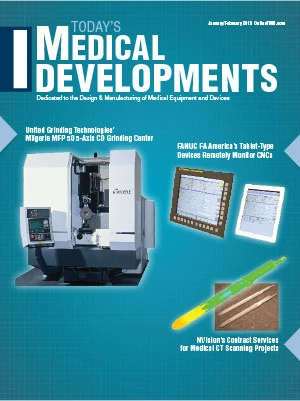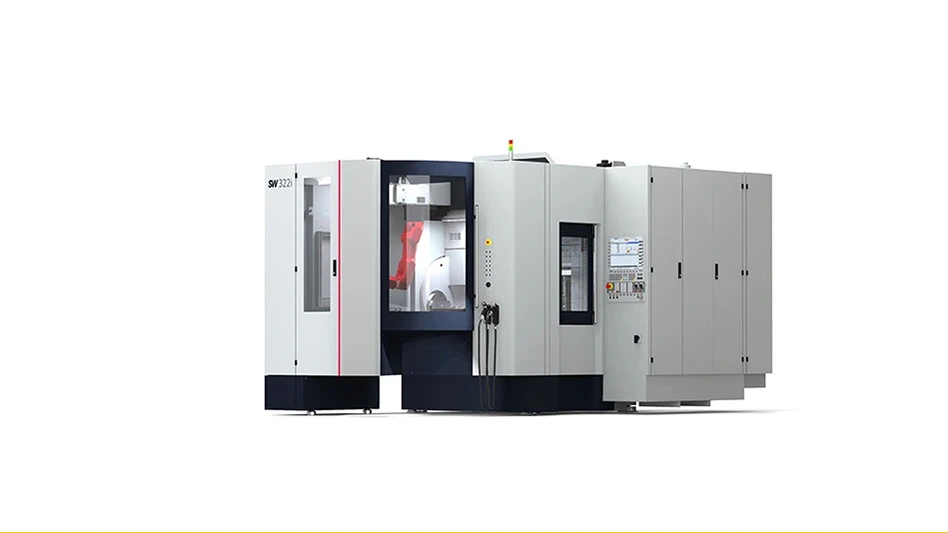 TOP: SUPERA shows remarkable resistance to fracture and excellent outcomes even in challenging anatomical regions, such as the superficial femoral artery, the popliteal artery, and the biliary ducts. BOTTOM: The closed loop structure enhances the mechanical properties of the design by allowing the wire to resist torsion. TOP: SUPERA shows remarkable resistance to fracture and excellent outcomes even in challenging anatomical regions, such as the superficial femoral artery, the popliteal artery, and the biliary ducts. BOTTOM: The closed loop structure enhances the mechanical properties of the design by allowing the wire to resist torsion. |
The mechanical characteristics of the SUPERA stent may provide a unique treatment option for clinicians and may represent a paradigm shift in stenting for the SFA and Popliteal arteries. The technology is designed to protect and restore anatomical function. It is currently indicated in the U.S. for treatment of biliary strictures, and in Europe, Canada, and Australia for biliary strictures and peripheral vascular disease. This new class of stent is based on a braided Nitinol wire structure that may have significant design and performance advantages over the standard laser-cut tube Nitinol stents (SNS). The SUPERA stent structure is engineered to maximize axial flexibility while maintaining high radial strength, two design attributes which are usually opposing in typical stent designs. In addition, the SUPERA stent can bend onto itself (zero inside radius) without kinking or losing its circular cross-section. This is primarily due to the absence of axially aligned features resisting axial deformation or deformation caused from bending.
These characteristics translate to a higher fracture resistance compared to other stents and the ability to support vessel anatomy as demonstrated in one to two year follow up clinical experience. SUPERA shows remarkable resistance to fracture and excellent outcomes even in challenging anatomical regions, such as the superficial femoral artery, the popliteal artery, and the biliary ducts.
Design, Manufacturing, Structure
The SUPERA stent is constructed from six Nitinol wires interwoven in a braided tubular design, forming a closed cell structure. Once braided, the six Nitinol wires are shape set at a high temperature to set the wire braid geometry permanently. The stent is finished after removing the heavier Nitinol oxides, leaving behind a uniform passivated titanium-rich oxide with excellent in-vivo biocompatibility and corrosion resistance.
The combination of superelasticity Nitinol, a near equiatomic intermetallic compound of nickel and titanium, with the interwoven stent design allows the SUPERA stent to regain its shape after large deformation making it very resistant to both fatigue and fracture.
The closed loop structure of the SUPERA stent greatly enhances the mechanical properties of the design by allowing the wire to resist torsion. The braided design with a relatively high braid angle combined with the closed-loop structure results in a stent with very high radial strength, when compared to other marketed stents. This becomes paramount in the most advanced, eccentric, calcified vascular lesions of the lower periphery or for the palliative treatment of biliary strictures produced by the steady inward growth of malignant neoplasms. The SUPERA stent is also unique because it can achieve high radial strength without producing a chronic outward force, something most marketed laser-cut stents must do in order to resist the inward loading. The difference between SUPERA and a standard laser-cut Nitinol stent is that design of the latter is as a series of circumferential springs, which require over sizing in order to load the springs to support the anatomy, resulting in chronic outward force. In contrast, the SUPERA design does not require over sizing and does not produce a chronic outward force.
The radial strength of the SUPERA stent platform has been characterized using the segmental compression method via an independent laboratory. The segmented head employs wedge-shaped elements that simultaneously activate through an arc. This motion changes the effective diameter of the opening in the center of the head, therefore compressing the stent before allowing it to then expand. Segmented head equipment measures the mean load resistance for the length of stent contained within the head. The software monitors and records displacement and force. These outputs then convert to stent diameter and radial strength (force per unit length). Using this testing methodology, a series of radial strength tests have been completed which studied the radial strength characteristics of the SUPERA stent and compared those results against other marketed stents. These tests show that the radial strength characteristics of the SUPERA stent platform are a minimum four times greater than the typical SNS and as a result, provide significantly improved crush and kink resistance compared to SNS and, are robust for the intended indications.
Structural Analysis
The origin of most fatigue fractures for Nitinol stents is either from high stress concentration areas of the stent structure, internal defects such as inclusions, stringers, and/or seam/fold/crack, and/or remnants of the recast layer formed during the laser cutting process. The overall opportunity for stent fatigue fracture is significantly higher for laser cut stents both in respect to the nature of more complicated design patterns as well as closeness of the stent to the presence of material defects due to thinner walls. In the braided design of the SUPERA stent, stresses that build up in the material from external deformation have been shown to be uniformly distributed throughout the material as the interwoven helical design is free of stress risers. Large geometric changes in the interwoven structure can be taken up by large scale flexing of the wires, therefore minimizing internal stresses on the Nitinol wire and enhancing durability.
 TOP: Construction of the SUPERA stent is from six Nitinol wires interwoven in a braided tubular design, forming a closed cell structure. MIDDLE: The SUPERA stent structure is engineered to maximize axial flexibility while maintaining high radial strength. BOTTOM: The SUPERA stent can bend onto itself (zero inside radius) without kinking or losing its circular cross-section. TOP: Construction of the SUPERA stent is from six Nitinol wires interwoven in a braided tubular design, forming a closed cell structure. MIDDLE: The SUPERA stent structure is engineered to maximize axial flexibility while maintaining high radial strength. BOTTOM: The SUPERA stent can bend onto itself (zero inside radius) without kinking or losing its circular cross-section. |
This was confirmed by a nonlinear finite element analysis (FEA) conducted by an independent consulting firm on SUPERA stents to determine the maximum stress and strains in the stent when subjected to delivery system loading, unloading, and multiple post deployment physiological loading conditions. A 3D solid model of each stent design was created using SolidWorks CAD software. The CAD model represents the stress-free, shape set dimensions of the stent prior to loading. An assumed strain formulation was used for the element formulation to improve the bending characteristics associated with the use of solid elements.
A stress/strain-life analysis was conducted to determine the fatigue factor of safety (prediction of durability) when the deployed stent was subject to radial dilation followed by other deformations caused by the dynamic motion of the leg. Deployment of the stent was into a simulated elastic vessel and the internal vessel pressure cycled between diastolic and systolic pressure equivalents. Analysis was of a wide range of potential physiological environments. Elastic material constants were determined for the specified vessel compliance by calibrating the nominal vessel diameter at the mean arterial pressure. In all models, consideration of contact and non-penetration between each of the wires and the vessel occurred throughout the analysis. After the radial loading was completed, the models were then subjected to boundary conditions such as bending, torsion, axial compression, and crush, and with stents in overlapping scenarios. In all cases, the SUPERA stent demonstrated positive fatigue safety factors, which would predict that the stent is robust for the intended service life of the device.
Corrosion Susceptibility
A unique and proprietary chemical removal of the heavy oxide and subsequent creation of a thin and uniform protective titanium oxide layer in the range of less than 10µm makes the SUPERA stent highly resistant to pitting, crevice, and galvanic corrosion. The SUPERA stent has also gone through extensive in-vitro nickel-leaching studies for durations of more than three months, demonstrating nickel ion leaching significantly below reported allowable nickel in tissue and/or oral intake in human use.
Conclusion
Stent designs that are more compatible, those that provide a remodeling effect with the host vessel and resist/adapt to the mechanical or anatomical forces in their surroundings, should provide an improved procedural interface without causing biomechanical complications. The differentiated, and highly disruptive design of the SUPERA stent, with its interwoven wire structure, improves radial strength and axial flexibility to handle the complex normal and pathologic challenging anatomy encountered in patients undergoing peripheral artery and biliary stent implantation better. Design of SUPERA is to protect and restore anatomical function. Independent substantive mechanical testing, demonstrated that SUPERA, produced a minimum of four times the radial strength, 360% stronger crush resistance, significantly improved flexion characteristics, resistance to kinking, and the highest fracture resistance compared to the competitive standard Nitinol tubular stents that is was tested against. Based upon the wide body of positive clinical outcomes from various trials, the SUPERA stent may represent a new standard of care for SFA and Popliteal artery treatment.
IDEV Technologies
Webster, TX
www.idevmd.com

Explore the January February 2013 Issue
Check out more from this issue and find your next story to read.
Latest from Today's Medical Developments
- Tariffs threaten small business growth, increase costs across industries
- Feed your brain on your lunch break at our upcoming Lunch + Learn!
- Robotics action plan for Europe
- Maximize your First Article Inspection efficiency and accuracy
- UPM Additive rebrands to UPM Advanced
- Master Bond’s LED415DC90Med dual-curable adhesive
- Minalex celebrates 60 years of excellence in miniature aluminum extrusions
- Tormach’s Chip Conveyor Kit for the 1500MX CNC Mill





